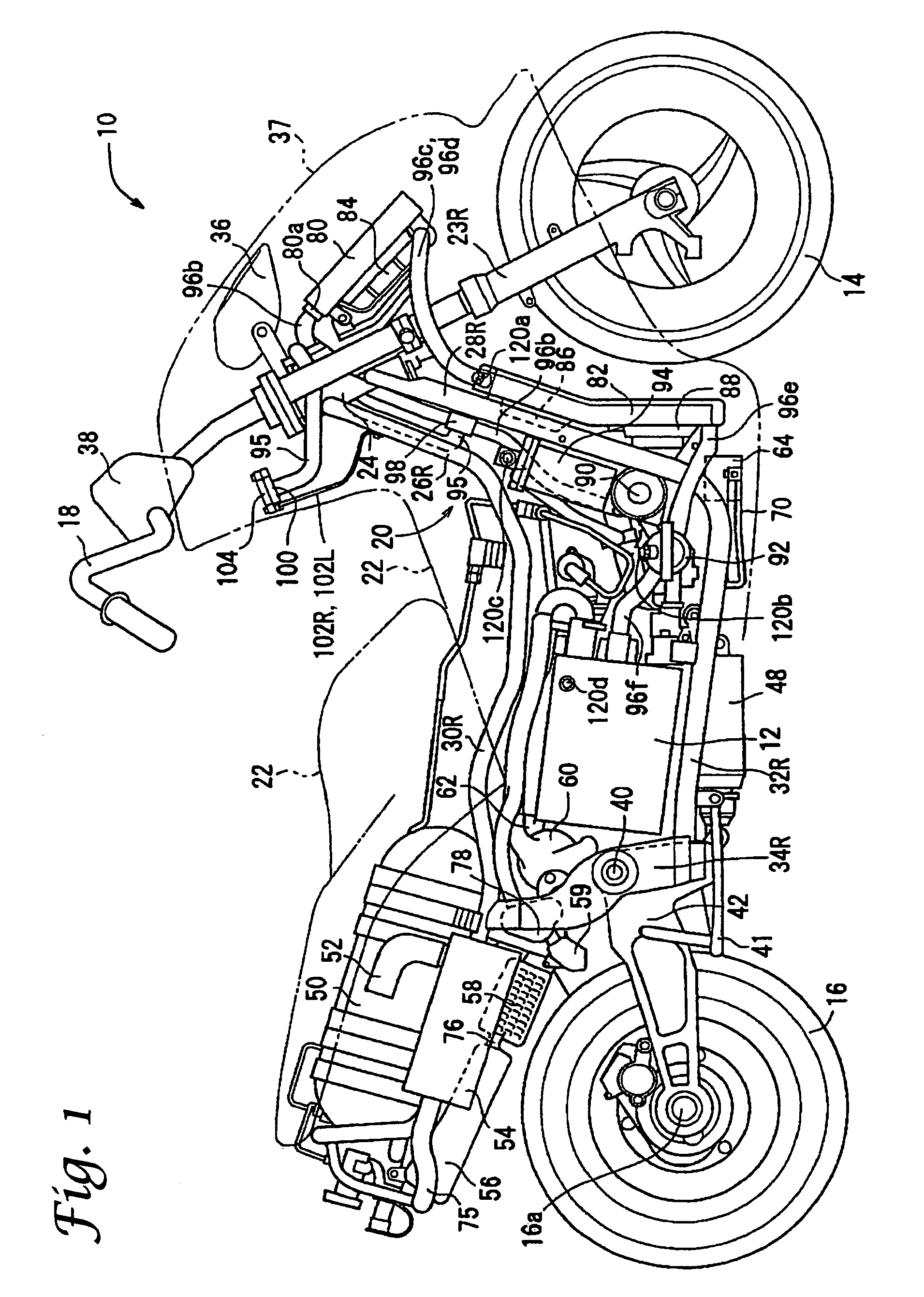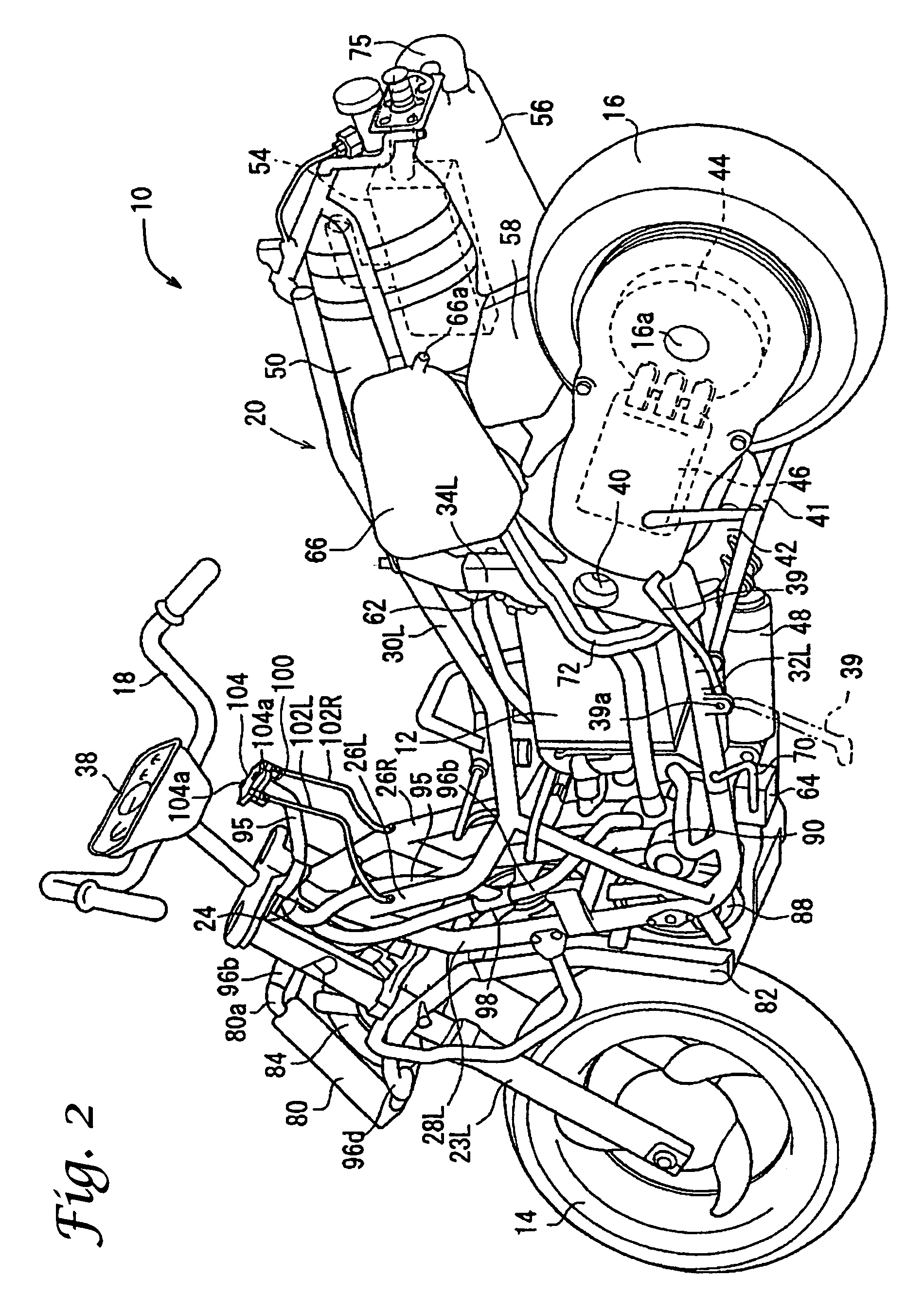Two-wheeled fuel-cell vehicle with hydrogen sensor
a fuel-cell vehicle and hydrogen sensor technology, applied in the direction of electric propulsion mounting, cycle equipment, electric propulsion equipment, etc., can solve the problem of difficult structure application to a two-wheeled vehicle without roof, and achieve the effect of increasing reliability, increasing space, and effective arrangement spa
- Summary
- Abstract
- Description
- Claims
- Application Information
AI Technical Summary
Benefits of technology
Problems solved by technology
Method used
Image
Examples
Embodiment Construction
[0020]Hereafter, a fuel-cell two-wheeled vehicle in accordance with the present invention is described in a preferred embodiment and with reference to the accompanying drawings FIG. 1 to FIG. 8. Hereafter, mechanisms mounted on a one-by-one basis on the left and right sides of a fuel-cell two-wheeled vehicle 10 are described distinctively by appending “L” to the reference symbol of features on the left side and by appending “R” to the reference symbol of features on the right side.
[0021]As shown in FIG. 1 to FIG. 3, a scooter type fuel-cell two-wheeled vehicle 10 as a fuel-cell two-wheeled vehicle in accordance with the present embodiment is mounted with a fuel cell 12 and runs by the use of electric power supplied from the fuel cell 12. In the fuel cell 12, hydrogen gas supplied to an anode electrode reacts with reaction gas (air) supplied to a cathode electrode to generate electric power. In the present embodiment, a well-known fuel cell is employed as the fuel cell 12 and hence t...
PUM
 Login to View More
Login to View More Abstract
Description
Claims
Application Information
 Login to View More
Login to View More - R&D
- Intellectual Property
- Life Sciences
- Materials
- Tech Scout
- Unparalleled Data Quality
- Higher Quality Content
- 60% Fewer Hallucinations
Browse by: Latest US Patents, China's latest patents, Technical Efficacy Thesaurus, Application Domain, Technology Topic, Popular Technical Reports.
© 2025 PatSnap. All rights reserved.Legal|Privacy policy|Modern Slavery Act Transparency Statement|Sitemap|About US| Contact US: help@patsnap.com



